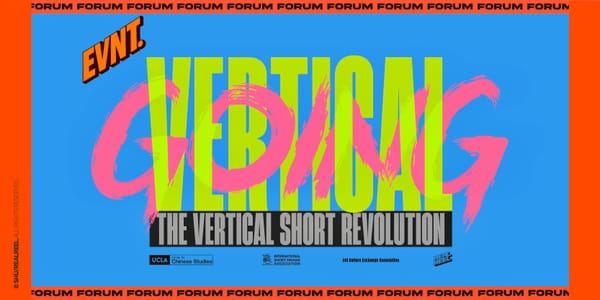The Micro-Drama Moment: How Hollywood’s Post-Strike Slowdown Opened a Door, and Who’s Walking Through It
Post-strike Hollywood slowed; phone-first vertical dramas surged. Inside the $1.3B U.S. market: budgets, funnels, ARPU, and a producer’s playbook to win.

Dek: In the wake of 2023’s strikes, Los Angeles is still running on fewer shoots and tighter slates. Meanwhile, the “vertical drama” machine: cheap to make, fast to release, and algorithm-tuned, has quietly turned the U.S. into the world’s most valuable market for micro-dramas. Here’s what’s real (and what’s hype) about the business in 2025, and how to actually play it.
The reset: fewer greenlights, more hustle
A year after the Writers Guild and SAG-AFTRA strikes, Hollywood hasn’t bounced back to pre-strike volume. Production in Los Angeles and across the U.S. remains well below “peak TV” levels as studios prioritize profitability, reduce orders, and consolidate spend. For below-the-line workers, that’s meant fewer days on set; for indie producers, longer waits between greenlights.

That vacuum created space for something different: phone-first, 60–90 minute “micro-dramas” diced into 1–3 minute vertical episodes. They move fast, they’re melodramatic by design, and, crucially, they’re hireable. Sets are popping up across L.A., Santa Clarita, Atlanta, and New York; shoots wrap in about a week; and rates are paid out of budgets that look microscopic by streamer standards.

The money: the U.S. is now the engine
The U.S. has become the revenue center of the global micro-drama boom. Industry trackers estimate the U.S. market will generate roughly $1.3 billion in 2025 (excluding China) as part of a ~$3B global pie, with hits like The Double Life of My Billionaire Husband pushing toward ~500 million views on a single title. Separately, app-store intelligence shows U.S. short-drama revenue hit ~$350 million in Q1 2025 alone, representing ~49% of worldwide short-drama app revenue that quarter. Translation: the U.S. audience pays.

Consumer spending patterns back that up. Users are funneled through freemium ladders: free early episodes, then ads, coins, or subs. Some viewers opt into $200/year all-access passes on one app; heavy users stacking multiple apps report spending upward of $200/month. That level of ARPU is why platforms keep seeding new titles every week.

Budgets & timelines: why it pencils
On cost, credible ranges have settled in. A typical micro-drama season costs $100,000–$300,000, shoots in 8–10 days, and releases weeks later, versus an average ~871 days from start to theatrical release for a traditional film. Some under-performers are even re-cut or re-shot for $300k–$500k once the data says so. This industrial cadence: write, shoot, A/B, monetize, explains how the category scaled while legacy production slowed.

Who’s watching: not just Gen-Z
Despite the TikTok aesthetics, the heaviest U.S. cohorts skew women, millennials to middle-aged, with romance, billionaire soap, “contract marriage,” mob, and supernatural (werewolves/vamps) at the top of the funnel. That female skew is consistent across multiple reports and first-party platform comments.
Two friction points matter for retention:
- Pricing transparency: coin ladders and per-episode pricing feel “gamey” to some U.S. users;
- Localization: translated imports can test well in ads but underperform in completion unless they’re re-written/re-shot for U.S. tastes. Platforms increasingly originate in English, or “algorithm-cut” under-performers mid-flight.
Content playbook: from dubbed imports to “U.S.-first”
The early go-to was translated Chinese IP. It moved quickly and proved demand, but cultural friction showed up in comments and KPIs. The current playbook is a three-track pipeline:
- Global IP mining → U.S. adaptation. Novel platforms and reading apps feed concepts; the winners get compact, twist-dense scripts with American settings and archetypes.
- U.S.-originals at scale. Weekly launches sustain monetization curves; most top apps now target a new series per week cadence.
- Data-driven recuts. If cliffhangers under-deliver, teams will re-order scenes or re-shoot sequences to hit the “paywall moment” sooner and boost conversion.
The result is a library that reads “TikTok-native” but is structurally closer to daytime soaps: clean motivations, compressed arcs, a twist every 60–120 seconds.
UA & monetization: the math behind the melodrama
User acquisition is still a knife fight. In the U.S., Meta captures ~65% of social ad spend, with TikTok and Google splitting much of the rest, so your costs rise and fall with creative iteration speed. Once onboarded, revenue mixes IAP (coins/subs) with IAA (rewarded/interstitial) to flex for both whales and price-sensitive viewers.
Critically, weekly subs and annual passes are normalizing for heavy users, while casuals barter ads for unlocks. That’s exactly the “two-lane” monetization U.S. audiences have been trained on, if you make the value proposition legible.
Hollywood’s posture: from skepticism to pilots
After Quibi, the town’s default was “never again.” But the economics here are different: eight-day shoots, six-figure budgets, weekly drops. You’re already seeing movement: ex-studio execs launching dedicated platforms; Fox investing in suppliers; accelerator slots going to short-drama startups; and newsroom-level attention treating verticals as a legitimate pipeline (and job creator) in L.A.
The strategic next step isn’t just importing IP; it’s closed-loop development: test a concept as a micro-drama, then expand the breakout title into a film, series, podcast, or novelization. Think of micro-dramas as paid market research that also throws off real cash.
How to actually win (a producer’s checklist)
- Write for the meter. Plot beats every 60–90 seconds; clear stakes every beat. If an episode can’t end on a hook, it’s probably the wrong scene.
- Cast for archetype legibility. The format rewards instantly readable motivations; “complicated” can come later in reveals.
- Budget like a game team. Over-invest in iterative editing and ad creative, not only principal photography—your trailer suite is half the product.
- Localize first, translate second. If you must start from overseas IP, make the U.S. rewrite the primary script, not an afterthought.
- Offer both lanes at checkout. Let whales subscribe and dabblers watch ads; keep the ladder transparent so sentiment doesn’t drag your store ratings.
- Plan for reshoots/re-cuts. Allocate 10–20% of budget for algorithm-informed changes post-launch; it’s the difference between a flat curve and compounding revenue.
Hollywood’s contraction created a talent glut. Micro-dramas offered a pressure valve, with a business that’s real, growing, and distinctly American in how it monetizes. For studios and producers, the smartest posture isn’t to sneer or to chase every trope; it’s to treat verticals as a low-risk IP lab where story engines, casts, and even loglines are market-tested at speed, then scale the breakouts across formats.
The “American dream” of micro-dramas isn’t about replacing prestige television. It’s about rebuilding a middle, fast, flexible, and shamelessly melodramatic, where both craft labor and creators can work more often, and where data helps pay for second chances.
Real Reel™ Newsletter:











